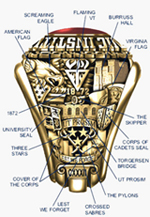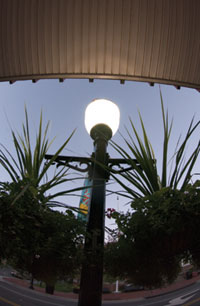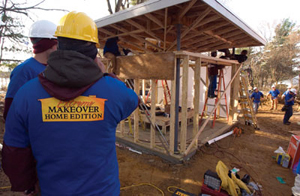 |
|
|
I am now confident that when the MIT tradition of the "Brass Rat" -- as its ring is called because of the way the school mascot, a beaver, is depicted on the flat, stoneless top face of the ring -- began in 1929, it was inspired by Tech's own ring and those of the military academies. Because the ring is customized by each class (at both Tech and MIT) to represent it accurately, interest in and ownership of rings at these institutions is much greater than that at other schools, although the pride and prestige factor of having attended one of these schools probably doesn't hurt. The world changes, as do some characteristics associated with entire generations, but part of what links us together at Tech is our traditions. Even though I may not have been able to participate in them as an undergraduate, I still feel an enthusiastic pride that such traditions continue. B. Hunter '00 | Meredith, N.H.
I read some of the letters about global warming and climatic changes (Spring 2006). It should be obvious that human activities and behaviors have affected climatic changes. One factor has to be population explosions. Since the beginning of recorded history, the population has risen from very few to 6 billion-plus. How long will it take the 6 billion to double? And then double again? There are two kinds of infrastructures, natural and human-made. There must be a balance between what humans build and the natural support systems upon which all life, including humankind, depends for survival. Where I live, natural forests continue to be completely destroyed by a method known as "clear cutting." These forests have been a vital buffer between the surface of the earth and the atmosphere. They have regulated the temperature between the earth and the sky, preventing the violent mixing of air masses of different temperatures, which has protected us from tornadoes and hurricanes. These trees also have acted as natural air purifiers, taking in carbon dioxide and giving back oxygen. Their leaves have formed organic layers on the forest floors to create a habitat for further plant life, which in turn has supported wildlife. The trees have purified the ground waters, and the hydraulic actions of their root systems have maintained the ground-water levels. I believe the preservation and conservation of such forests is vital to the survival of humankind. If forests are totally destroyed, we may be unable to re-propagate them. Wallace L. Icenhour '58 | Chase City, Va.
Your article on the re-branding of Virginia Tech (Spring 2006) convinces me that we are watching the slow crumble of America. The attitude that it is more important to look good than to be good started in the entertainment industry and now pervades every segment of our society, including education. Instead of questioning the quality of the survey done by U.S. News & World Report or the intelligence of the participants, the author concludes "that in some cases, it is all about the brand." That attitude does not make me proud of the institution where I earned my degree. Armond "Nick" Acri '80 | Jackson, Wyo.
I have been traveling and just finished reading the story about "Bosco," or Professor William Henry Rasche, in Virginia Tech Magazine (Winter 2006) and have one more story to share about him. In fall 1946, I had just returned to VPI, as it was known then, and was in a class of his. The class was packed, and the majority of us were returning veterans under the GI Bill. During the first session, Professor Rasche slowly, majestically looked around at us and said, "Harumph! Some of you should be plumbers!" Considering that most of us didn't have the prospect of a job within the next year or two, how right he was! Having the privilege of being in Bosco's class was certainly a memorable experience and, in fact, one of my most wonderful memories of Virginia Tech. Bennett Nathanson '47 | Bala Cynwyd, Pa.
After graduation, I served a tour in the U.S. Air Force, which took the key and me to all 50 states. In addition, we traveled to Spain, Morocco, Guam, the Philippines, Portugal, Newfoundland, Nova Scotia, Prince Edward Island, and Mexico. After my service tour was completed, I went to work for RJR Nabisco, which required further travel, so the key and I went to Germany, Luxembourg, Puerto Rico, and Jamaica. Since I retired, we have also visited Italy, France, Hungary, Slovenia, Austria, the Czech Republic, New Zealand, Australia, Japan, China, Ireland, Scotland, Aruba, and the Virgin Islands. While I cannot begin to calculate the miles that this key has traveled, I do know that it has been a fond remembrance of my time at Tech. My class celebrates its 50th reunion in October, so the key and I have been together for 54 years. Here is the key. I am sure the post office doesn't need it, but you may do with it whatever you please. Roger Simmons '56 | Wilmington, N.C. Editor’s note: Taking responsibility for a key that is more well-traveled than the entire magazine staff was a daunting prospect, so we contacted the Alumni Association, which will add the key to its collection of Virginia Tech memorabilia.
|
|||||||||||||




